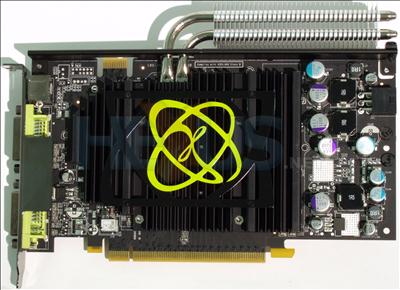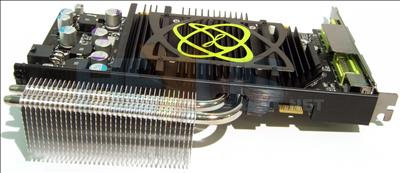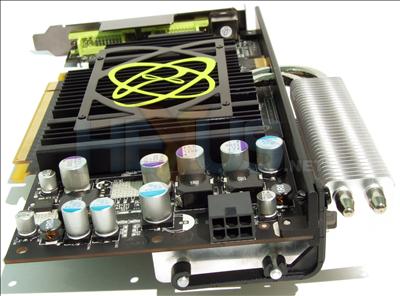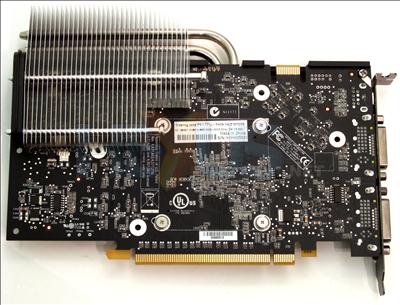Appearance and thoughts
XFX already has one GeForce 7950-based SKU that focuses on silent cooling. The Extreme Passive Edition, which we took a look at here, introduced a fanless design and overclocked core/memory speeds of 570MHz and 1460MHz, respectively, up from the default GeForce 7950 GT's 550/1400.If that's just not extreme enough for you, XFX now launches the GeForce 7950 GT XXX Edition (Triple-X, no less) that utilises the same cooling as the incumbent passive design but, thanks to speed-binning, we guess, faster core and memory speeds of 610MHz and 1600MHz, respectively. A number of companies often refer to their products as extreme, where a 10-20MHz speed increase is, they reckon, enough to deserve the moniker. XFX's XXX edition, though, is fully deserving of its title. The increased clocks offer an 11% core speed increase and 14% memory bandwidth advantage. The extra horsepower will separate it from the rest of the 7950 GT crowd, especially if you game at high-resolution and high image quality settings.
The XFX GeForce 7950 GT XXX Edition uses the same cooling as found on the regular Extreme Edition (boy, this nomenclature hyperbole is getting out of hand). That entails the use of a double-sided heatsink through which a couple of heatpipes ferry the warm air out the silver-coloured fin section you see to one side of the card. Only the rear sticker differentiates the two XFX passive graphics cards.
The cooling appendage on the rear may interfere with motherboards that situate a slot above the first 16x PCIe's, so bear that in mind and check your motherboard for compatibility.
You can add another card for SLI running, which would, in our opinion, offer the fastest fanless solution to date. The clock speeds of the individual card are not far off that of a regular GeForce 7900 GTX 512's (650/1600), so you can appreciate the power under the passive hood.
The GeForce 7950 GT SKU betters its older GTX counterpart in some ways. For example, the card is equipped with HDCP support, which is nice, and both ports offer dual-link DVI connectivity. There's also a DIN port that can output either to analogue S-Video or component. No VIVO, however, which seems to be a feature that's been steadily phased out of mainstream cards.
XFX has pulled no surprises here other than being able to passively cool an overclocked GeForce 7950 GT GPU. NVIDIA's architecture documents hint at a maximum TDP of 82W, and this overclocked version may require just a little extra juice to its elevated clocks, so kudos to XFX for finding the perfect balance between silence and speed. Be warned, however, that you'll need a chassis with reasonable airflow to keep the card at decent temperatures, so absolute silence will be difficult to achieve without running into heat-related problems.
Under load our sample topped out at 75C with an ambient temperature of 21C, so the cooling is akin to the reference, fan-assisted cooler. Hot, yes, but it's not a burning issue.














